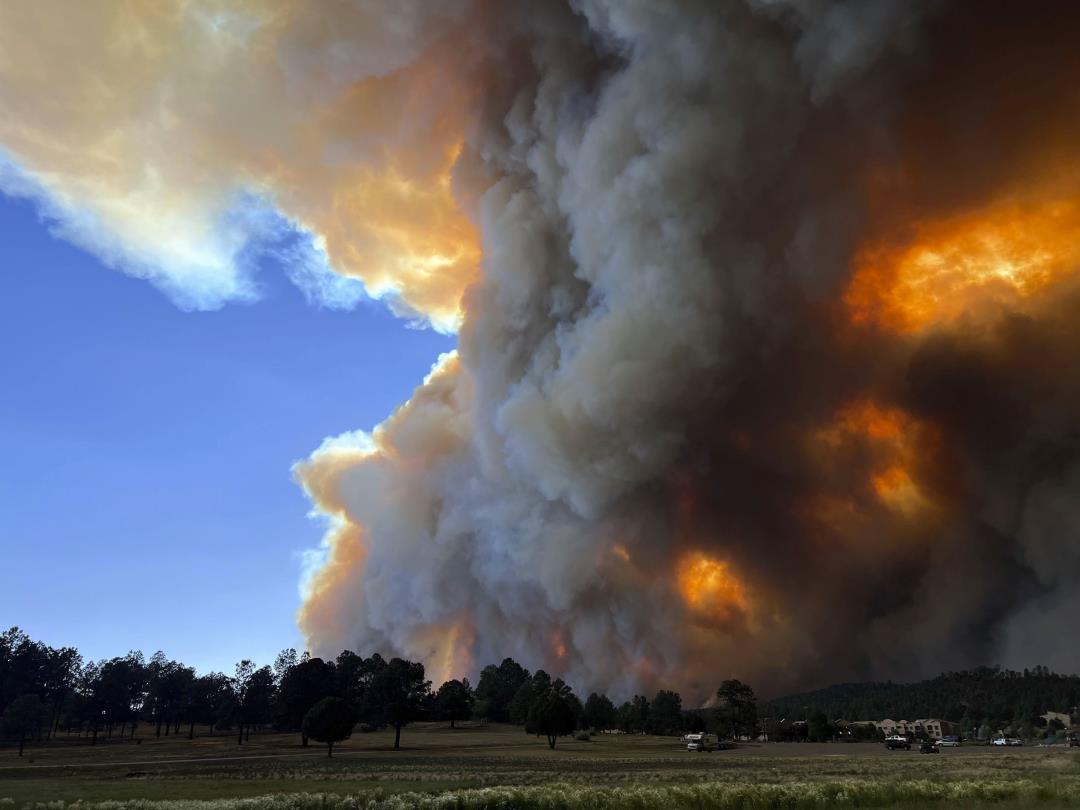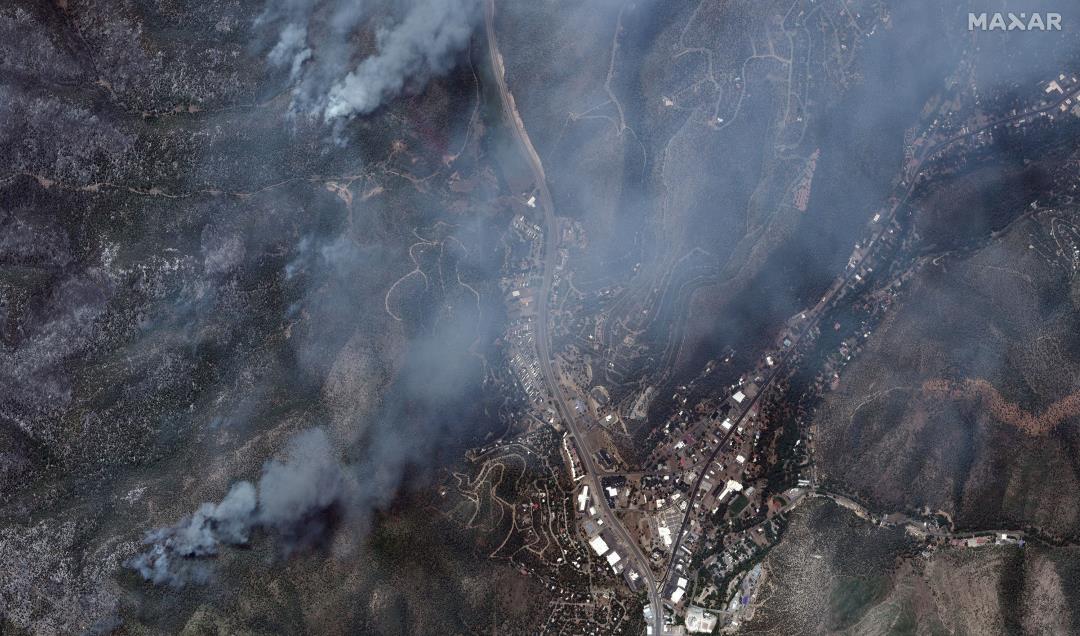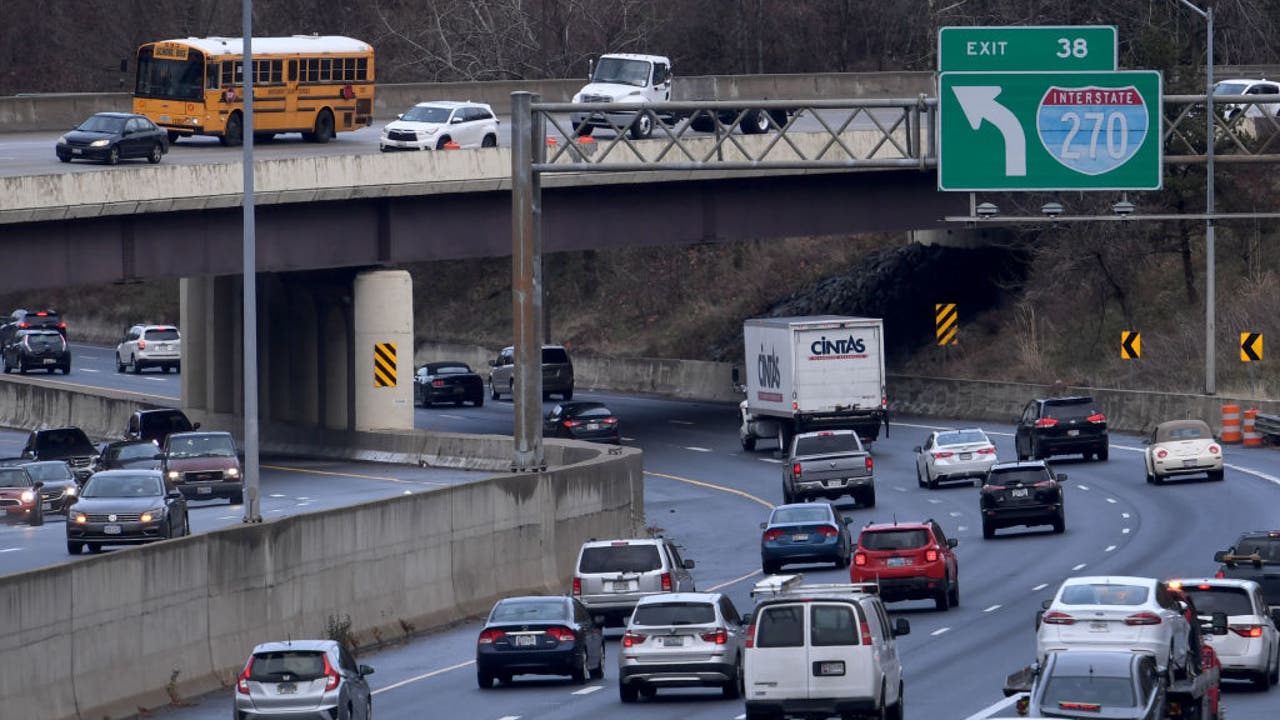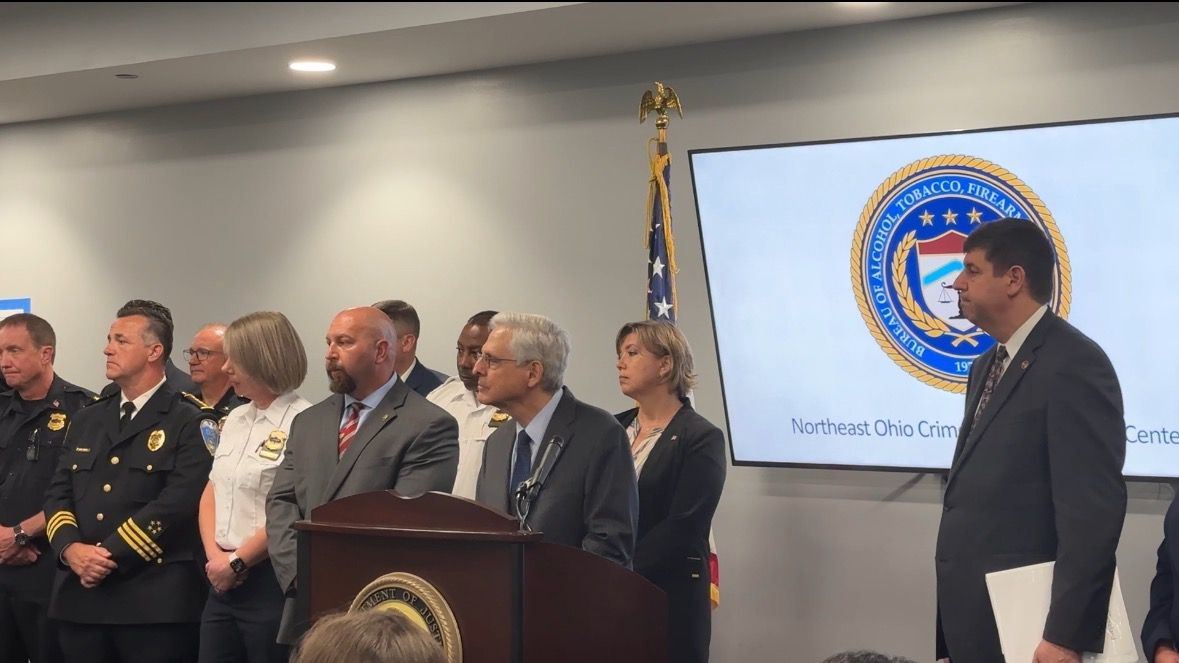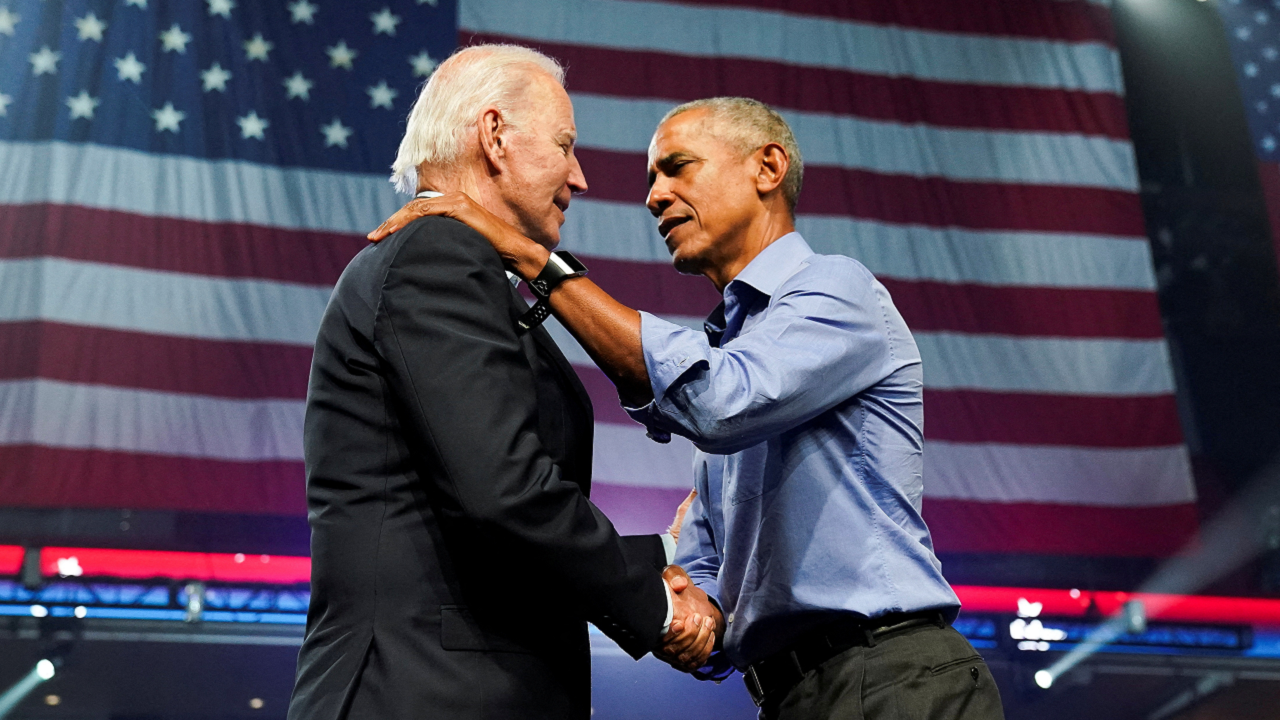World
Wildfire season has started. Here’s what Europe’s doing wrong
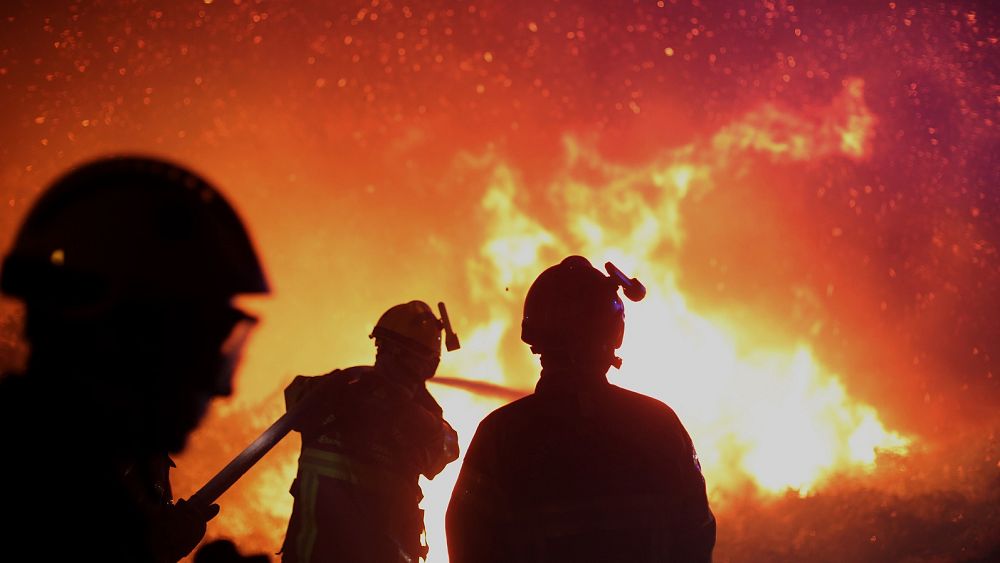
The EU is focusing too much on suppressing wildfires, one expert told Euronews, and not properly addressing the root causes.
By the time summer officially started in Europe this week, sparkling new Canadairs and other firefighting vehicles had been delivered across European Union countries and hundreds of firefighters were already pre-positioned to tackle any wildfire that might ignite.
Europe’s wildfire season is not so much upcoming as it is ongoing with stats already well above the average, suggesting that 2023 could be devastating.
For some, this is proof that the way the EU deals with wildfires is short-sighted with too much emphasis on emergency services and not enough on prevention.
There is also worry that policymakers have been slow to address the air pollution caused by wildfires, which is suspected of being far deadlier than the fires themselves.
Spain and France already deeply impacted
According to the European Forest Fire Information System (EFFIS), more than 119,000 hectares had already been reduced to cinders across the EU by 18 June, well above the average of 80,000 hectares recorded by that time over the 2003-2022 period.
It took just 31 days for the curves depicting this year’s weekly cumulative number of fires and burnt areas to diverge significantly from the ones tracing the last two decades’ averages.
This is despite nearly a dozen countries, including Greece and Italy — two of the traditionally most inflicted nations — seeing below-average figures. The surface burnt in both countries so far this year represents just 10% of the averages they usually see at this time of year.
But Spain and France have not been so lucky. The surface burnt in France has already reached over 21,000 hectares, about 3.5 times the average for the past two decades This is dwarfed by the 66,200 hectares Spain has lost so far this year in 324 fires – both numbers having more than quadrupled.
A spate of countries in central and eastern Europe have also seen numbers jump, albeit from a very low level, but nonetheless confirming a trend observed over the last few years that see wildfires now gradually creeping northward too.
Fire suppression vs prevention
This comes after more than 830,000 hectares were devastated last year — the second worst year since 2006 — with damages estimated at around the €2.5 billion mark.
In response, the EU bolstered its arsenal to combat wildfires by doubling its firefighting fleet this year to count 28 aircraft stationed across 10 countries. And for the second year running, hundreds of firefighters have been pre-positioned, this time in Greece, France and Portugal.
This is of course welcome, but for Prof Dr Johann Georg Goldammer, the director of the Germany-based Global Fire Monitoring Centre (GFMC), it does little to address the root causes.
“At the moment I see that almost all governments are repeating the same and what has been done previously in Southern Europe – focusing on fire suppression, calling for modern vehicles, aeroplanes,” and participation in the EU Civil Protection Mechanism, he told Euronews.
“It seems that this is, for politicians and for the European Commission and governments, kind of an indicator of progress.
“But I don’t see any investment to address the underlying causes of fire, you know, like forestry and land management,” he said.
Climate and demographic changes
Climate change plays a role in the multiplication and intensity of wildfires.
Over a quarter of the EU’s territory is in warning conditions for drought with a further 10% on alert, according to the European Drought Observatory, because of serious rainfall and soil moisture deficits.
And then there is the rising mercury. Europe has been warming twice as much as the global average since the 1980s and was, last year, approximately 2.3°C above the pre-industrial (1850-1900) average.
Since then, the world experienced its warmest May and early June on record with the global-mean temperature actually breaching the 1.5⁰C limit in the first week of this month.
All this means that across large swathes of the continent the land, is much drier than normal, facilitating the spread of wildfires.
But demographic changes also shoulder a lot of the blame. The desertification of rural areas in favour of urban centres means that the land is no longer managed in the same way.
Biomass which was traditionally used for farming or heating or other local human activities, “is now available to wildfire”, Goldammer told Euronews.
Short-term measures like preventive burning to reduce the flammable biomass on certain corridors can help but they’re no magic bullet.
The GFMC has been recommending that European governments make rural space more attractive to younger generations and invest in traditional but also innovative land management to decrease the flammability of the lands.
“Part of it is the fact that this takes an enormous amount of time. It’s so easy to buy half a dozen aeroplanes or ground tankers, you know, investing some billions and presenting them in a nice press conference,” Goldammer said.
“But investing in giving subsidies to local farmers and to shepherds, to modify the flammability of the land, takes a long time. It takes years. And the success is not easy to prove. It’s hard to prove any fire that has been prevented,” he added.
Where there’s fire, there’s smoke
If the old adage goes that where there is smoke there is fire, the reverse is also true and smoke, it turns out, could prove even more dangerous.
“When there’s burning vegetation, a vast range of very toxic and hazardous gases, as well as particulate matter (PM), is emitted and that has direct impacts on local air quality,” Mark Parrington, a senior scientist at the European Centre for Medium-Range Weather Forecasts (ECMWF), told Euronews.
PM2.5 air pollution caused by vegetation fires across Europe is believed to have caused 1,400 premature deaths in 2005 and a further 1,000 in 2008, according to the European Health Observatory. Meanwhile, 865 people died in wildfires between 1945 and 2016 in Greece, Portugal, Spain and the Italian island of Sardinia.
“Health effects related to these massive exposures to air pollution include increased risk of respiratory and cardiometabolic symptoms,” Zorana J. Andersen, the Environment and Health Committee Chair at the European Respiratory Society, told Euronews. These could lead to severe consequences that require the need for medication or hospitalisations.
“In fragile patients, these air pollution episodes can even trigger death. Patients with chronic diseases, especially severe asthma, both children and adults are especially vulnerable, as well as elderly citizens, heart patients, pregnant women and people working outdoors,” she added.
Air pollution is at its highest close to the fire.
But in the case of mega-fires — the likes of which we’ve seen in France, Portugal, Spain and Greece in recent years — when the right, or rather wrong, meteorological conditions are in place, it can travel.
For instance, smoke from the wildfires in Canada over the past few weeks has, at times, got high enough it was picked up by the jet stream and crossed the Atlantic, Parrington said. At other times, weather conditions kept the smoke close to the ground where it was then transported by the wind to large population centres.
Heatwaves further reduce the air quality and exacerbate the pollution, “reminding us that air pollution and climate change solutions go hand in hand”, the ERS expert added.
European policymakers, she said, should urgently pass legislation to lower greenhouse gas emissions driving climate change and “have a historical opportunity to pass the most ambitious air pollution legislation globally” through the ongoing revision of the Ambient Air Quality Directive.
“This would lead to significant reductions of air pollution and related direct major improvements in health, and at the same time ensure mitigation of climate change, with an indirect positive impact on health,” Andersen said.

World
Live Updates: Kenyan President Vows to Prevent Violence ‘At Whatever Cost’
President Ruto spoke after demonstrators in Nairobi breached the Parliament to protest the passage of a bill raising taxes on many basics. At least five people were killed, according to Amnesty International and several civic organizations.
World
Ukraine's Zelenskyy replaces military's commander of joint forces
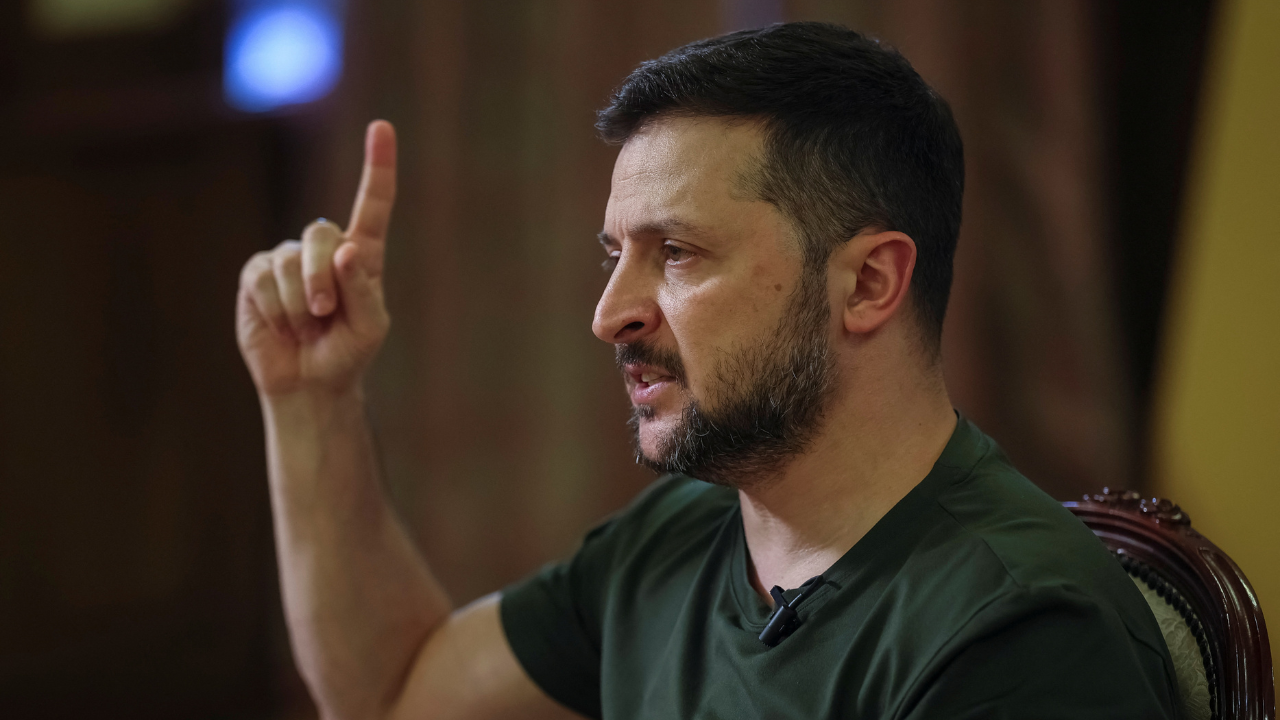
- President Volodymyr Zelenskyy has announced the replacement of Lieutenant-General Yuri Sodol as the commander of the Joint Forces of Ukraine’s Armed Forces.
- Zelenskyy named Brigadier-General Andriy Hnatov as Sodol’s successor, who will handle strategic planning of operations.
- Sodol’s removal followed a letter by Bohdan Krotevych, head of Ukraine’s Azov regiment, accusing Sodol of actions leading to military setbacks.
President Volodymyr Zelenskyy said on Monday he had replaced the commander of the Joint Forces of Ukraine’s Armed Forces, Lieutenant-General Yuri Sodol, after reports surfaced that he had performed badly in the 28-month-old war against Russia.
Zelenskyy, speaking in his nightly video address, gave no reason for the dismissal. He said Sodol had been replaced by Brigadier-General Andriy Hnatov in the post, which involves strategic planning of operations.
Sodol’s removal, one of a series of personnel changes, followed publication of a letter by the head of Ukraine’s revered Azov regiment, Bohdan Krotevych, in which he alleged that Sodol’s actions had led to serious military setbacks.
RUSSIA BLAMES US AFTER UKRAINIAN ATTACK ON CRIMEA LEAVES SEVERAL DEAD, WOUNDED
In a post on the Telegram messaging app, Krotevych did not identify Sodol by name, but said an unnamed general “has killed more Ukrainian soldiers than any Russian general.”
Ukraine’s President Volodymyr Zelenskyy speaks during an interview in Kyiv, Ukraine, on May 20, 2024. Zelenskyy said on Monday he had replaced the commander of the Joint Forces of Ukraine’s Armed Forces, Lieutenant-General Yuri Sodol, after reports surfaced that he had performed badly in the 28-month-old war against Russia. (REUTERS/Gleb Garanich)
“What I do care about is that combat battalion and brigade commanders are put on trial for losing an observation post, but a general is not put on trial for losing regions, dozens of cities and thousands of soldiers,” Krotevych wrote.
“All the military personnel now understand who I am talking about because 99 percent of the military hate him for what he does.”
The news outlet Ukrainska Pravda, citing a leaked report, said a criminal complaint had been submitted concerning Sodol, who was promoted earlier this year, although it did not identify him. It said Krotevych was willing to testify against him.
Hnatov had served as deputy commander of the southern theater of operations since 2022 and played a leading role in recapturing much of southern Kherson region from Russian invaders.
In the spring of 2023, he commanded the defense of Bakhmut in eastern Ukraine, a town that eventually fell to Russian forces after many months of pitched battles.
Krotevych, in a social media post after the president’s announcement, described Hnatov as a “very worthy officer”.
With Russian forces making gains and slowly advancing through eastern Ukraine in recent months, the military has undergone considerable changes.
The military top commander, Valeriy Zaluzhnyi, was dismissed in February after public differences with Zelenskyy over the conduct of the war.
World
A right to drink? Inside the debate to protect US workers against the heat

Dallas, Texas – More than a decade later, Eva Marroquin’s voice still shakes when she talks about it.
The 51-year-old mother of five had been working construction in Austin, Texas, for about five years when she heard that a friend had died of heat exposure at a worksite. It was 2012, and he had been helping to build a bridge at the intersection of two local highways.
“He just couldn’t get to the water in time,” Marroquin said.
The news shook Marroquin, who had experienced her own close calls with the sweltering temperatures that broil the southern United States in the summertime.
After days of painting walls or cleaning up sites, Marroquin’s face would burn red in the heat. Sometimes, she felt feverish and dizzy. Her throat would even close. It left her with haunting thoughts of what her friend must have lived through in his final moments.
“I distinctly remember how that felt, and it made me want to speak up even more,” Marroquin told Al Jazeera.
Marroquin is among the advocates pushing for greater protections for workers facing extreme temperatures in the US.
The US Department of Health and Human Services found that heat-related deaths overall have been on the rise, as climate change drives temperatures to new heights. In 2023, an estimated 2,302 people died from heat-related conditions, up from 1,722 in 2022 and 1,602 in 2021.
But in the US, there are no federal protections specifically designed to protect workers from environmental heat.
Marroquin and other workplace advocates are lobbying to change that — but in the meantime, state and local governments in the US have been duking it out over the authority to protect workers from the stifling heat.
A fight between state and local authority
On July 1, a new law comes into effect in Florida that reflects those tensions.
Last summer was the hottest on record in the state, prompting Miami-Dade County to consider an ordinance that would mandate heat safety training, regular breaks and access to water during high-temperature days.
But Florida Governor Ron DeSantis blocked that attempt, signing a law that instead banned local governments from establishing their own workplace safety requirements for heat exposure.
“There was a lot of concern out of one county, Miami-Dade,” DeSantis told local press at the time, warning that the local ordinance would have caused “a lot of problems”.
Florida was the second state in recent months to pass such a law. In 2023, Texas Governor Greg Abbott also signed what critics called the “Death Star” bill — so named for its ability to destroy local regulations that went beyond existing state mandates.
It, too, prevented municipalities from implementing their own heat safety laws, effectively killing ordinances in areas like Austin and Dallas. Houston and other cities have challenged the law in court.
As in Florida, however, proponents of the law have argued that a patchwork of local regulations would be too cumbersome for companies to navigate. Business groups also warned of “local government overreach”.
“The Texas law is mostly focused on preventing the big municipalities from doing basically anything that might make doing business in Texas inconvenient or location-specific,” said Alison Grinter, a civil rights lawyer in the Dallas metropolitan area.
She explained that the oil and gas industries have long held sway in Texas politics and helped craft the state’s business-friendly reputation. That, in turn, has attracted technology and finance companies to the state as well.
Grinter added that part of the motive for blocking the local ordinances was also political. While the Texas state government is dominated by Republicans, several of its biggest cities — including Houston and Austin — are led by Democrats.
“For culture war purposes, the idea that there are four or five different big oases in the middle of the state that are sanctuaries from all of the reactionary social laws really galls lawmakers,” Grinter said.
Still, only five states have taken it upon themselves to pass heat-exposure protections. They include California, Oregon, Washington, Colorado and Minnesota.
“The Texas government doesn’t want local laws, but they also don’t want a statewide law,” said Ana Gonzalez of the Texas AFL-CIO, a labour union. “So workers are stuck.”

Petitioning the federal government
That gridlock on the state and local level has shifted the battle over workplace protections to the federal government.
The Occupational Safety and Health Administration (OSHA) mandates that employers implement a workplace safety policy, but it does not indicate how that policy must address heat protection.
That may be changing, though. In 2021, OSHA announced it would start to develop a rule to mitigate the risks of heat-related injuries and deaths for workers, and a spokesperson, Kimberly Darby, told Al Jazeera that this month marked an important step forward.
“Last week, OSHA’s proposed rule was sent to the Office of Management and Budget for review,” Darby said. “We are another step closer to giving workers the protections they need and deserve.”
The proposed rule, however, has yet to be published — and its exact contents are therefore unknown. In addition, new OSHA rules can take years to achieve final approval.
So some advocates are looking to another federal body: the Federal Emergency Management Agency or FEMA.
On June 17, 31 organisations — including immigrants’ rights groups, environmental nonprofits and farmworkers unions — petitioned FEMA (PDF) to provide disaster relief funds for extreme heat, as well as areas affected by wildfire smoke.
It is part of a broader effort to convince the federal government to step in for their local counterparts, according to Will Humble, who signed the petition on behalf of the Arizona Public Health Association, a nonprofit.
“Planning for and saving lives is a state and local responsibility,” Humble told Al Jazeera. “But FEMA really should include heat emergencies in their funding. Many county health departments are understaffed.”

‘Not seen as human’
In the absence of strong federal action, activists like Christine Bolaños say that employers are left with all the power to decide how to address extreme heat in the workplace, leaving workers at risk.
According to the Bureau of Labor Statistics (BLS), at least 600 workers died from heat exposure while working from 2005 to 2021. An additional 43 deaths were documented in 2022 alone.
Experts indicate the actual number is likely higher, as heat-related deaths are difficult to track.
A broad swath of the workforce is at risk, too. The bureau estimates that 33 percent of American employees spend time outdoors as part of their everyday work.
Especially vulnerable are foreign-born Latino labourers, including both legal and undocumented immigrants, who represent a disproportionate number of work-related deaths.
Though these workers make up only 8.2 percent of the workforce, they represent 14 percent of on-the-job fatalities. The bureau also noted that Latino workers make up the majority of the construction and agricultural labour, two industries where heat exposure is an acute risk.
Bolaños — a staff member at the Workers Defense Project, a community organisation that fights for the rights of low-wage immigrant construction workers in Texas — said the heightened risks are part of a pattern of exploitation.
“Immigrant workers are especially prone to wage theft and other violations of their rights, and they’re often not aware of their rights,” said Bolaños.
The lack of heat-related protections, she added, was a reflection of how workplaces perceive these employees.
“Sometimes, they’re not seen as human,” Bolaños said. “They are not valued for their humanity, just what they can produce. Employers forget workers need to drink water. They need shade; they need breaks.”

‘The monster is here’
Congressman Greg Casar, a Texas Democrat, believes part of the problem is also scepticism towards climate change itself — and a resistance to addressing its dangers.
“Many of us progressives used to campaign on ‘the climate crisis is coming,’ and we were accused of making up a monster that didn’t exist,” Casar told Al Jazeera.
“Now the monster is here, and the things we’re fighting for have become so basic. We’re arguing over food and housing. We’re arguing over people having the right to a water break.”
Casar has spent years organising demonstrations to showcase the plight of workers — including through “thirst strikes”, where he and others refused to drink for hours, to demonstrate the risks of extreme heat.
At a “thirst strike” last year, Marroquin’s coarse, strong hands clutched a sign that read, “PEOPLE OVER PROFITS”.
Tears flowed from her eyes, which she says have been damaged by the sun and heat. She explained she developed pterygium, a kind of fleshy growth near one of her eyes, from her exposure to hot, dry conditions.
Now, a year later, Marroquin told Al Jazeera she hopes change will come soon. Just this month, she spoke to OSHA about her experience and gave feedback on the forthcoming federal rule.
“It’s really difficult to implement laws about work,” she conceded. “But we have to demand that OSHA implements rules as a whole across construction sites, in the same way they demand scaffolding is built in a certain way.”
But even with a federal standard on the way, advocates and legal experts are wary. Several told Al Jazeera that new OSHA rules are notoriously difficult to pass because of understaffing and a high standard of review, as well as potential legal challenges.
Gonzalez, the advocate from the Texas AFL-CIO, said she was bracing for the mandatory public commenting period for the eventual rule — at which time, she expects corporations to weigh in.
“I’m sure there will be pushback from the state or associations, because the rule will impact all industries,” she said. “But hopefully, this is going to prevent people from dying.”
-

 News1 week ago
News1 week agoJoe Biden, Barack Obama And Jimmy Kimmel Warn Of Another Donald Trump Term; Star-Filled L.A. Fundraiser Expected To Raise At Least $30 Million — Update
-

 World1 week ago
World1 week agoRussia-Ukraine war: List of key events, day 842
-

 News1 week ago
News1 week agoIt's easy to believe young voters could back Trump at young conservative conference
-

 World1 week ago
World1 week agoProtesters in Brussels march against right-wing ideology
-

 World1 week ago
World1 week agoSwiss summit demands 'territorial integrity' of Ukraine
-

 News1 week ago
News1 week agoA fast-moving wildfire spreads north of Los Angeles, forcing evacuations
-

 Politics1 week ago
Politics1 week agoJudge rules Missouri abortion ban did not aim to impose lawmakers' religious views on others
-

 World1 week ago
World1 week agoAl-Qaeda affiliate claims responsibility for June attack in Burkina Faso



